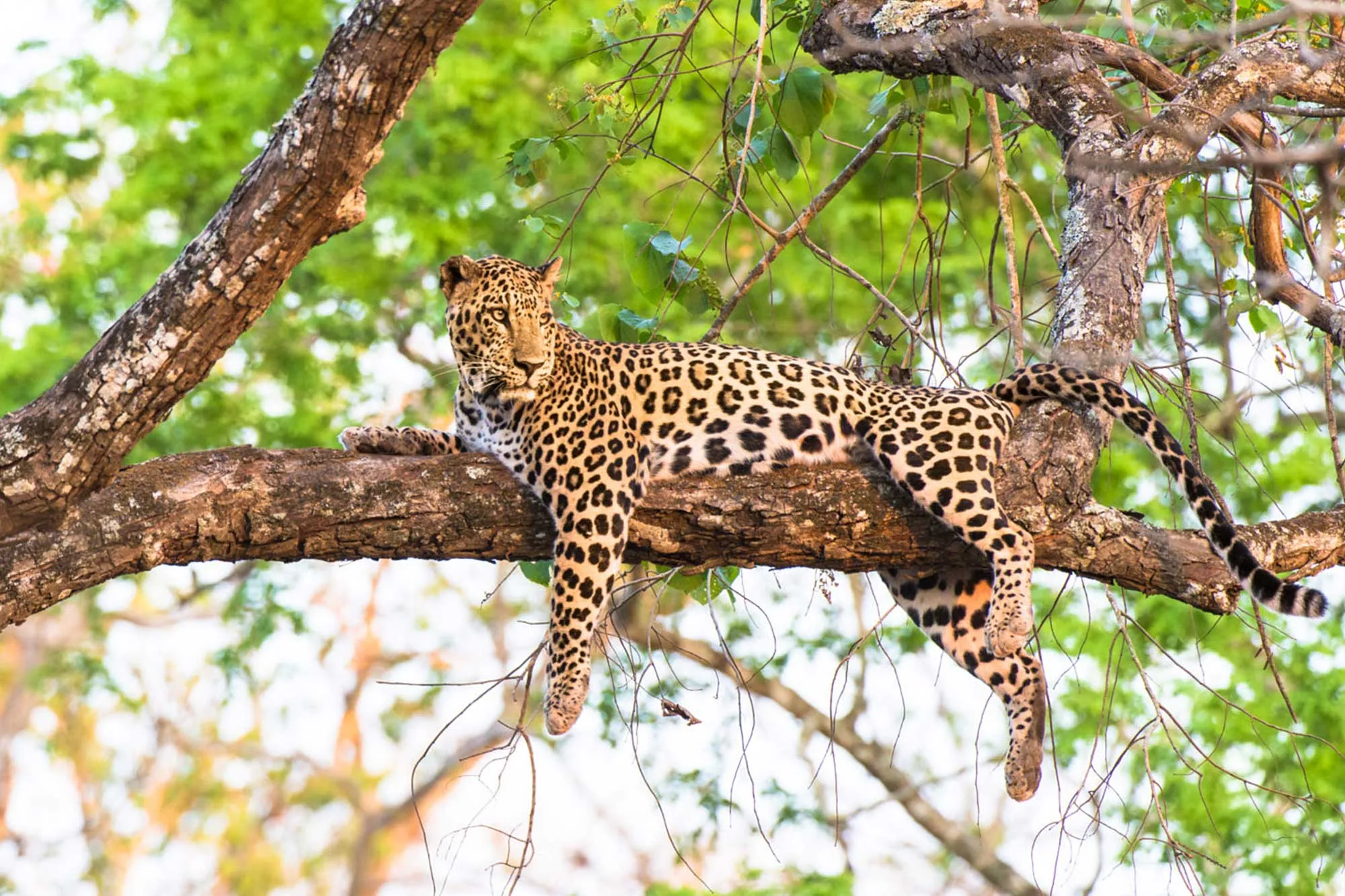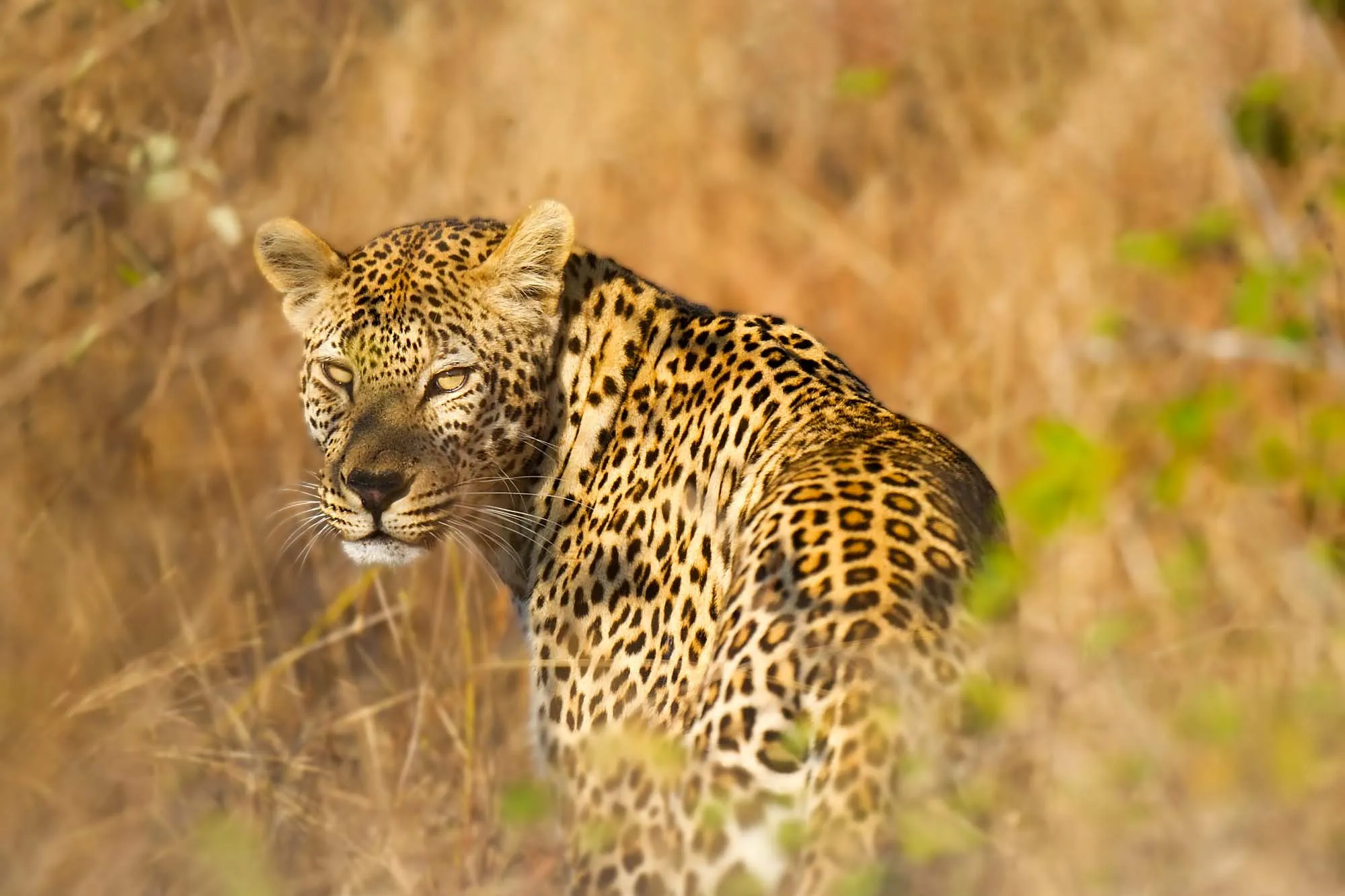
Best Places for Leopard Sightings in Uganda
Best Places for Leopard Sightings in Uganda. Uganda is celebrated for its rich tapestry of landscapes and wildlife. With leopards among its most sought-after sightings. These elusive cats, known for their stealth and adaptability, thrive across various terrains, from dense forests to open savannas. For those with a keen eye and patience. Uganda offers multiple prime locations to spot these graceful hunters in their natural habitat. Let’s delve into the top destinations for leopard sightings in Uganda, each offering unique features that enhance the chances of encountering these magnificent animals.

-
Queen Elizabeth National Park: The Heart of Leopard Sightings
Queen Elizabeth National Park, spanning over 1,978 square kilometers, is arguably the best destination in Uganda for spotting leopards. Located in western Uganda, the park boasts diverse ecosystems, from open savannas to lush forests and crater lakes, which offer ideal habitats for leopards to thrive.
Ishasha Sector: A Premier Leopard Territory
While Queen Elizabeth is famous for its tree-climbing lions, the Ishasha Sector is also home to a significant population of leopards. Here, leopards are often spotted lounging in the trees, a behavior they share with the park’s lions, particularly during the hot afternoons. The Ishasha Sector’s serene ambiance and lower visitor traffic make it a prime spot for undisturbed leopard sightings.
Mweya Peninsula and Kasenyi Plains: Twilight Leopard Safaris
The Mweya Peninsula and the Kasenyi Plains also offer opportunities to encounter leopards, especially during early mornings and late evenings. As they are nocturnal hunters, leopards are more likely to emerge in the twilight hours. During these times, their stealthy movements become more noticeable, particularly when they lurk along trails, riverbanks, and thickets. Night game drives offered in Queen Elizabeth National Park provide an exclusive opportunity to catch leopards prowling in the dark, adding an extra thrill to the safari experience.
-
Murchison Falls National Park: Scenic Encounters with Stealthy Predators
Murchison Falls National Park, Uganda’s largest national park, spans 3,893 square kilometers and is a haven for a diverse range of wildlife, including leopards. The park’s savanna, woodlands, and riverine areas provide a rich environment for leopards, especially along the Nile River banks and around the iconic falls.
Delta Point and Buligi Game Tracks: Prime Leopard Sightings
The delta area where the Victoria Nile meets Lake Albert is a favored region for leopard sightings. With its dense vegetation and abundant prey, it serves as a perfect hunting ground for leopards, who are often seen resting on tree branches or prowling along the trails. Additionally, the Buligi Game Tracks, which weave through scenic savannas and thickets, offer exceptional viewpoints for spotting leopards. Guided game drives along these tracks increase the chances of witnessing leopards on their evening hunts.
Karuma Falls Area: The Hidden Gem for Leopard Spotters
Karuma Falls, located on the northern edge of the park, is another promising site for leopard sightings. Leopards are frequently sighted here, concealed in the dense brush or scanning their surroundings from treetops. As the area remains less trafficked than other parts of Murchison, it provides a quieter environment for leopards, giving safari-goers a rare chance for an uninterrupted viewing experience.
-
Kidepo Valley National Park: A Remote Leopard Haven
Nestled in Uganda’s northeastern corner, Kidepo Valley National Park is a remote yet awe-inspiring location for wildlife enthusiasts. Known for its rugged landscapes, including mountains and arid savannas, Kidepo is home to a smaller but steady population of leopards.
Narus Valley: A Waterhole Attraction for Leopards
The Narus Valley, with its seasonal waterholes, attracts a variety of prey animals, which in turn lures leopards to the area. In Kidepo, the chance to spot leopards is enhanced by the park’s open terrain, which allows visitors to see the cats as they approach water sources, especially in the early morning and late afternoon. Furthermore, the scenic backdrop of mountains and expansive plains adds a unique dimension to the safari experience in Kidepo.
Namamukweny Valley and Mount Morungole: Lesser-Known Leopard Territories
While the Narus Valley remains the primary attraction, leopards are also spotted in the Namamukweny Valley and around Mount Morungole. These remote areas, with rocky outcrops and thick shrubs, provide ideal hunting and resting grounds for leopards. As Kidepo Valley National Park sees fewer visitors, it creates a secluded atmosphere for observing leopards in a truly wild setting, allowing for remarkable photography opportunities and serene game-viewing moments.
-
Lake Mburo National Park: Close Encounters in Compact Settings
Though smaller than Uganda’s other parks, Lake Mburo National Park offers a unique setting for leopard sightings. The park’s dense woodlands and acacia-dotted plains provide a diverse environment where leopards thrive, often visible around waterholes and in the park’s quieter zones.
Rubanga Forest: A Leopard Hideaway
Rubanga Forest, a small but dense woodland, serves as a prime habitat for leopards. It offers an intriguing setting for leopards to stalk prey and blend seamlessly into the foliage. Guided walks in Rubanga Forest allow visitors to explore the area closely, increasing the likelihood of spotting a leopard, especially when they’re basking in the branches or scouting the forest floor.
Rwonyo Rest Camp: A Night Safari Opportunity
Rwonyo Rest Camp, known for its evening activities, is an excellent spot for leopard sightings at night. As Lake Mburo offers night game drives, visitors have a rare opportunity to see leopards during their most active hours. The park’s smaller size makes encounters more likely as the leopards move between hunting grounds, making Lake Mburo a rewarding destination for those eager for close-up encounters with these nocturnal predators.
-
Semuliki National Park: A Rainforest Leopard Habitat
Situated in the western part of Uganda. Semuliki National Park is a dense rainforest area, setting it apart from the savanna parks typically associated with leopard sightings. While spotting leopards in rainforests is more challenging. Semuliki’s unique ecosystem allows leopards to thrive, especially in the park’s remote areas.
Riverine Forests and Hot Springs: Unusual Leopard Sightings
Leopards in Semuliki are most likely to be encountered near riverine forests and the famous Sempaya Hot Springs. Although they’re more challenging to spot due to the dense forest cover. Early morning hikes and evening walks increase the chances of sighting them as they move through the forest undergrowth. The hot springs and surrounding areas offer an additional attraction as they draw various animals, which in turn, lure leopards searching for prey.
Nyaburogo Gorge: A Hidden Leopard Refuge
Nyaburogo Gorge, with its rugged cliffs and dense foliage, serves as a secluded refuge for leopards in Semuliki. Here, leopards find ample cover, making it a suitable spot for daytime resting and hunting. Spotting a leopard here may require more patience and trained guides. But the experience of encountering one in such an untamed setting is deeply rewarding.

Final Tips for Maximizing Leopard Sightings
While Uganda’s parks offer multiple opportunities to spot leopards, sightings are never guaranteed due to their elusive nature. To maximize the chances of encountering leopards. Consider opting for night game drives, where permitted, and consult with experienced guides who understand leopard behavior and favored habitats. Additionally, staying quiet and observing patiently can significantly increase your chances, as leopards are more likely to emerge when undisturbed.
In conclusion, Uganda’s diverse landscapes provide a rich tapestry of habitats where leopards can be spotted. Each offering a unique safari experience. From the open plains of Queen Elizabeth National Park to the rugged terrains of Kidepo Valley. These destinations promise breathtaking encounters with one of Africa’s most mesmerizing predators.
Related Posts;






